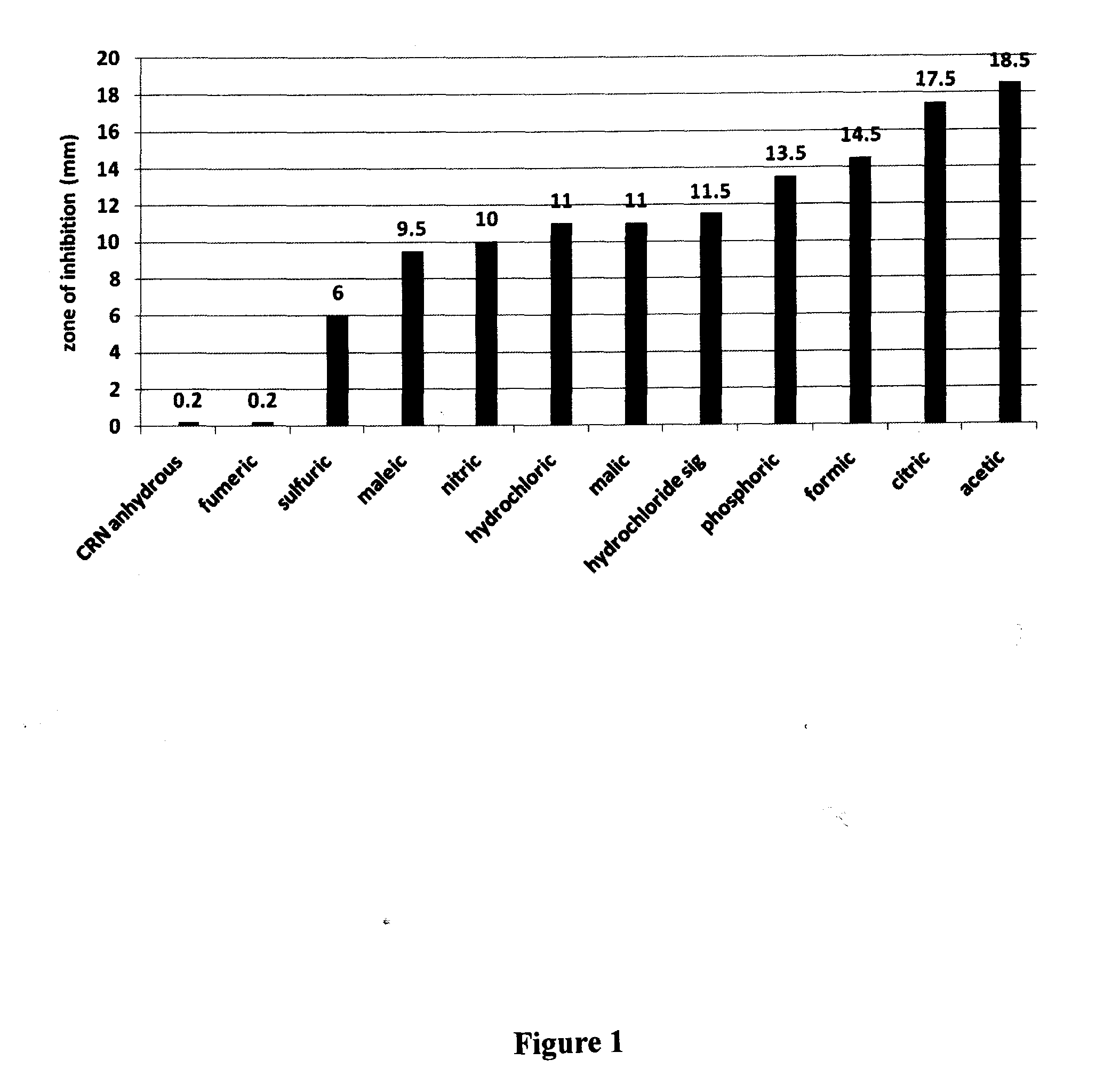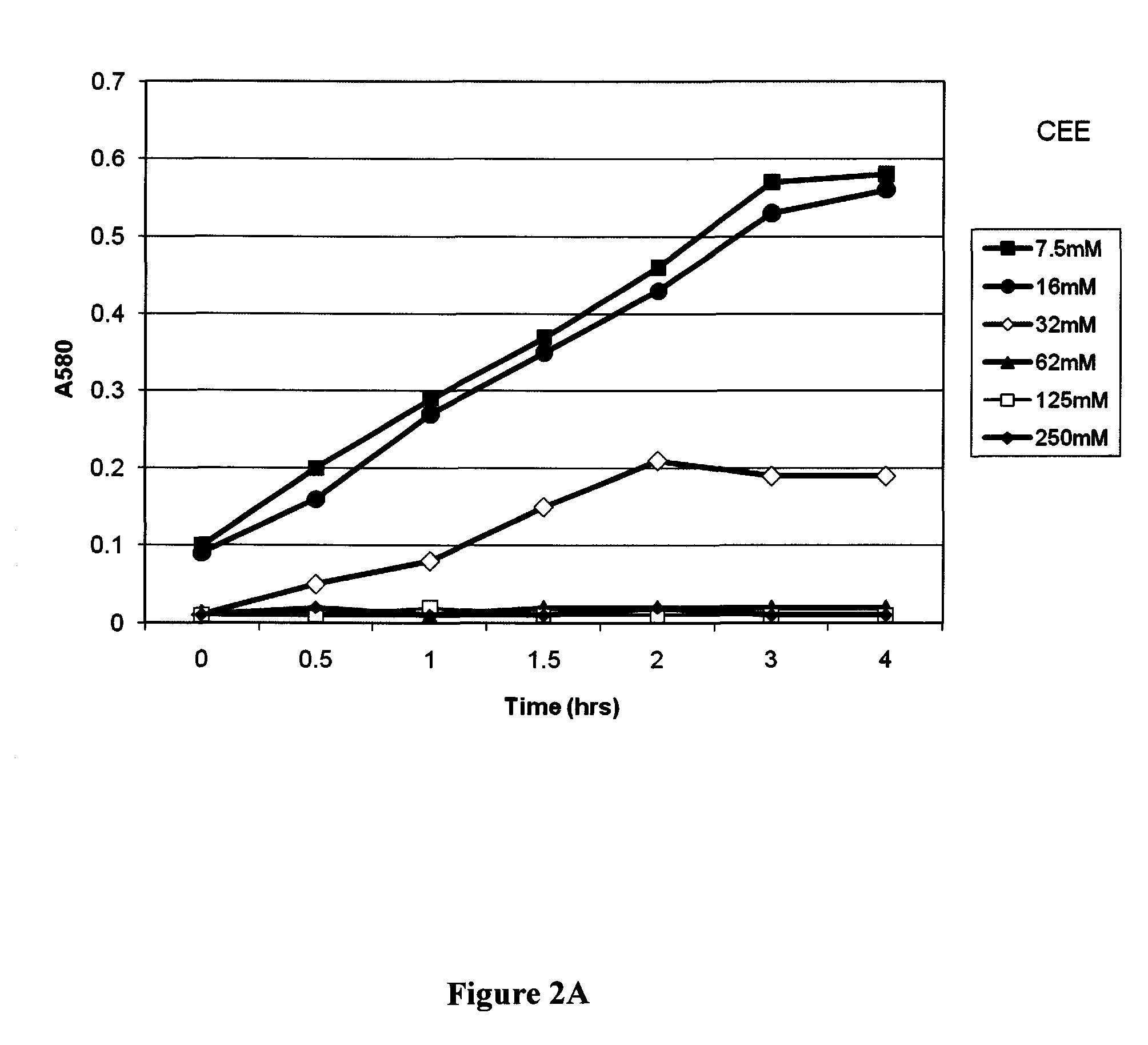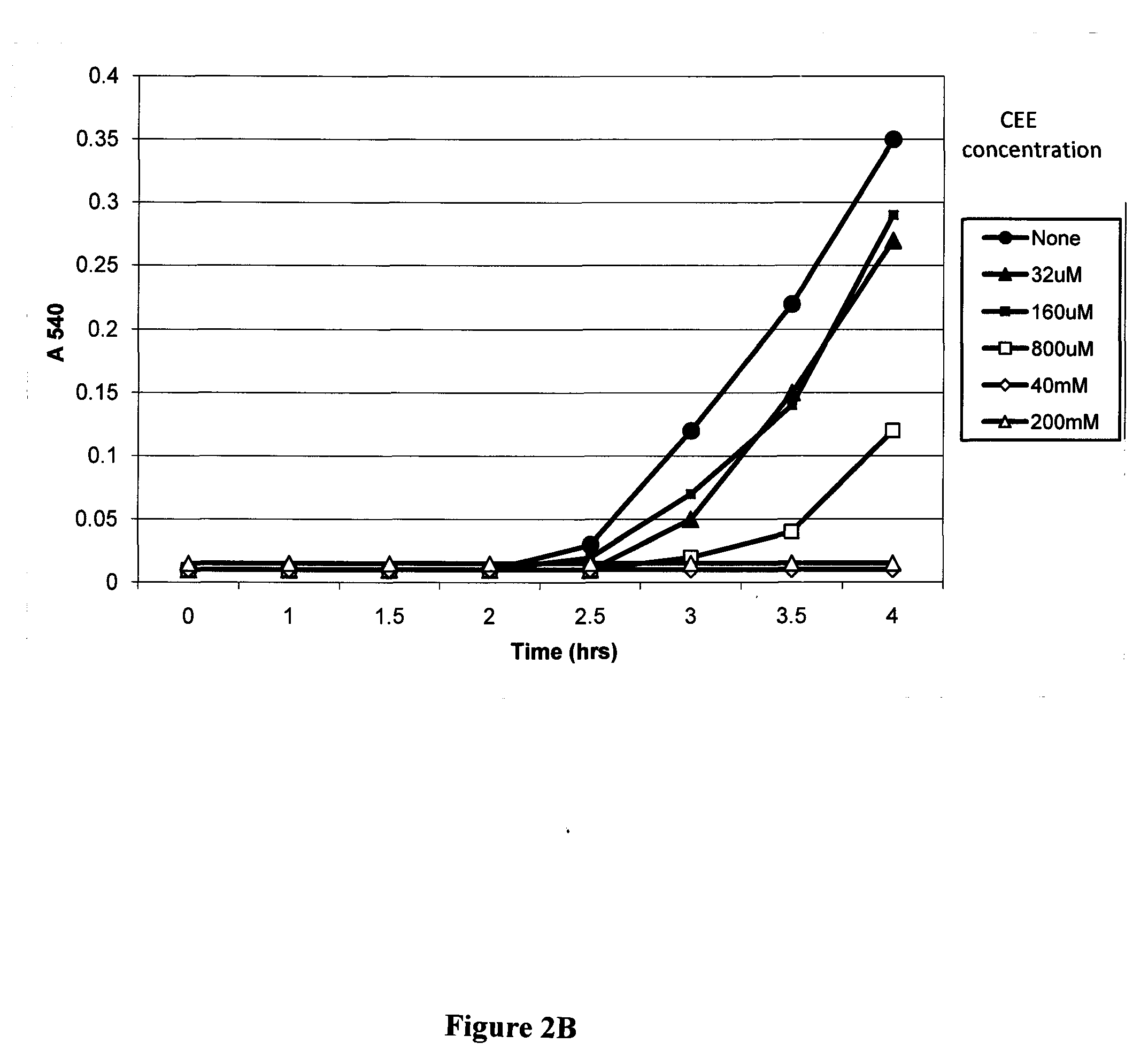Activated creatinine and precursors thereof as antibacterial agents, compositions and products containing such agents and uses thereof
a technology of activated creatinine and precursors, applied in the field of antibacterial agents, can solve the problems of affecting the growth of undesirable bacteria, affecting the survival of patients, and posing ever more severe threats to human health, and achieve the effect of inhibiting undesirable bacterial growth and promoting selective propagation of commercially important fungal cells
- Summary
- Abstract
- Description
- Claims
- Application Information
AI Technical Summary
Benefits of technology
Problems solved by technology
Method used
Image
Examples
example 1
[0083]A 2 molar solution of anhydrous creatinine (Sigma-Aldrich Chemical Co. St. Louis, Mo.) was prepared in water (113 mg in 0.5 ml H2O) and adjusted to pH 5.0-5.5 with different acids. Twenty five microliters of each pH adjusted solution was added to 30 milligrams of a powdered carrier, Eridex™, (crystalline sugar alcohol) (Cargill Inc. Cedar Rapids, Iowa), and stirred into a thickened slurry. Approximately 50 microliters of each mixture, containing 5 mg of acidified creatinine, was applied to a 6 mm disc and inverted onto a brain heart infusion agar plate that was spread one hour prior with Staphylococcus aureus diluted to 105 organisms per milliliter. Plates were incubated at 37° C. overnight and the clear zones showing inhibition of bacterial growth were measured. Each sample was run in duplicate and reported as an average + / −1 mm of the two measurements. Creatinine HCl was used as an internal standard on each plate to provide uniformity from plate to plate (measurements varied...
example 2
[0085]Compositions including the antibacterial agents described herein can be made by formulation procedures commonly used in the pharmaceutical and cosmetics industry.
[0086]For purposes of the experiments described below, test compositions were prepared by admixing antibacterially-activated creatinine (CRN) or a precursor of antibacterially-activated CRN, i.e., creatine ethyl ester (CEE), as required for the experiment at hand, with a weighed amount of a suitable carrier medium to give a final concentration of 28% by weight of the antibacterial agent, based on the total weight of the composition.
[0087]Antibacterial compositions were prepared following this procedure using a number of different aqueous and non-aqueous (anhydrous) carrier media, and evaluated for antibacterial activity in a standard disc diffusion assay. Thus, approximately 50 μL of each selected carrier containing 28% by weight of either a precursor of antibacterially-activated CRN, CEE, or antibacterially-activated...
example 3
[0089]An experiment was conducted with a precursor of antibacterially-activated CRN, i.e., CEE, as the antibacterial agent and tested on S. aureus and M. luteus plates for antibacterial activity.
[0090]The CEE precursor of antibacterially-activated CRN was diluted at different concentrations into Lederberg's broth (LB), which was then inoculated to 104 / mL with S. aureus. The cultures were incubated in capped plastic tubes at 37° C. and aerated by tumbling using a tube rotating device. Absorbance readings were plotted as a function of time, and the results are set forth in FIG. 2A. The data show that at a concentration of approximately 32 mM or greater, the CEE precursor of antibacterially-activated CRN inhibited growth of S. aureus.
[0091]A similar experiment was conducted with the same precursor of antibacterially-activated CRN and tested on M. luteus. Absorbance readings were plotted as a function of time and the results are set forth in FIG. 2B. The data show that at a concentrati...
PUM
| Property | Measurement | Unit |
|---|---|---|
| weight | aaaaa | aaaaa |
| weight | aaaaa | aaaaa |
| pH | aaaaa | aaaaa |
Abstract
Description
Claims
Application Information
 Login to View More
Login to View More - R&D
- Intellectual Property
- Life Sciences
- Materials
- Tech Scout
- Unparalleled Data Quality
- Higher Quality Content
- 60% Fewer Hallucinations
Browse by: Latest US Patents, China's latest patents, Technical Efficacy Thesaurus, Application Domain, Technology Topic, Popular Technical Reports.
© 2025 PatSnap. All rights reserved.Legal|Privacy policy|Modern Slavery Act Transparency Statement|Sitemap|About US| Contact US: help@patsnap.com



